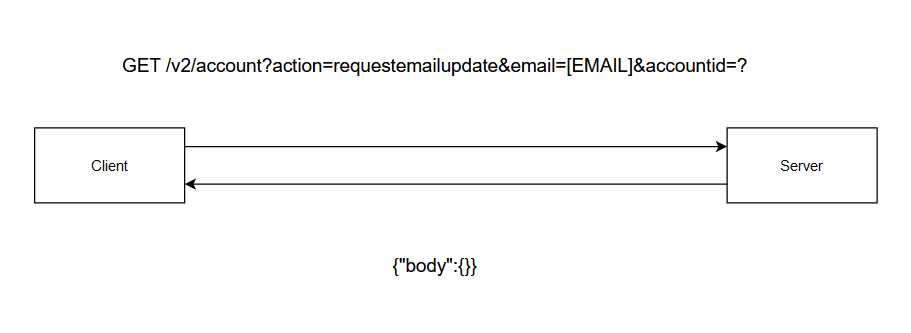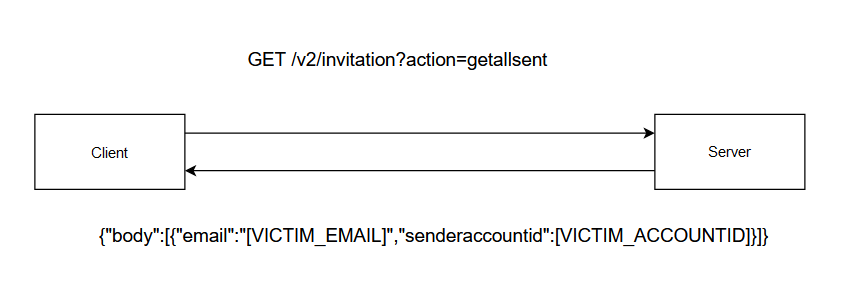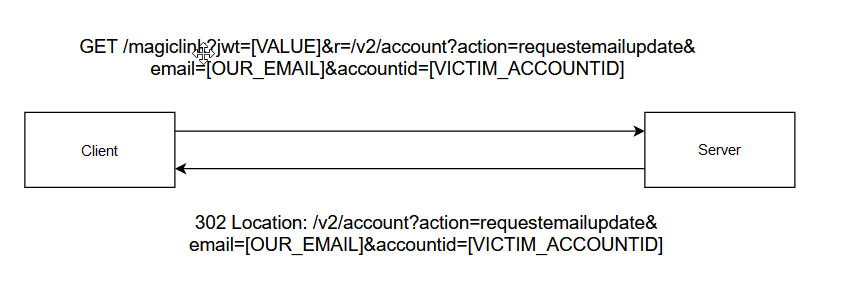Account Take Over Through A CSRF Combined With An Invitation Feature & The Login Functionality.
How
While testing the API I thought about downloading the apk version of this app to see if there were other endpoints I could test further. After decompiling the apk, I noticed an endpoint that changes the email of the user. I noticed that this endpoint is open to CSRF vulnerability, but The endpoint needed additional information for the attack to be successful, and I was able to get it using the invitation feature. After this, I used the login functionality to deliver the attack in a better way and eliminate the factor of complexity.
The CSRF Vulnerability
- After decompiling the apk I have an endpoint like this /v2/account.
- This endpoint expected to be sent as a POST request with a this body:
action=requestemailupdate&email=&accountid=
- So I tried to send this request as a GET request and it was successful. All I needed is to provide the accountid of the user doing this action and a new email.
- So I wanted to first identify if I can craft a simple form with a GET request to validate the CSRF vulnerability and it was successful.
- This attack worked because The cookie was protected with just the LAX samesite flag and I was able to send it as a GET request and the application didn’t really check on anything else.
- But as you can see if want to target a specific user how do I need to know his accountid.
-
So how I am going to get his accountid?

The Invitation Feature
- The application had an invitation feature to invite another user to compete on different things.
- I was able to know this from the apk also because I was able to find an invitation endpoint /v2/invitation
- This endpoint expected to be sent as a POST request with this body: action=getallrecieved.
- From the name of the action I anticipated that it gets the invitations sent to me.
- So I thought can I send invitations? lets try another action what about send but the application responded with not implemented.
- What about create. The application responded that it needs a parameter called email.
- Supplying the email The request was successful and I received the invitation. But the response was an empty body.
- But if I can there is an action called getallrecieved maybe there is an action called getallsent.
- And yes with this action I received a response with all the invitations I sent with the email and the accountid of the user.
-
With this the CSRF attack was ready to be delivered. But can I find a better way to deliver this attack?


The Login Functionality
- The application gives you the option to log in by providing your email and then receiving a magic link to click and sign you in.
- This endpoint expects to recieve a parameter called r to be sent as a body or as query.
- This parameter is a redirection parameter that redirects the user to an endpoint he wants after logging.
- The application appends the parameter to the magic link so as soon as you click it the application signs you in and then redirects to the value of r.
- So it’s a feature really no open redirect here but we can use it to make the user be redirected to the csrf endpoint and change his email to our email.
- All I have to do is to put the CSRF payload as value to the r parameter like this: r=/v2/account?action=requestemailupdate&email=[OUR_EMAIL]&accountid=[THE_VICTIM_ACCOUNTID].
-
Sending this with the login request the application is going to append it to the magic link and as soon as the user clicks it the application is going to sign him in then is going to redirect him to the CSRF endpoint to change his email and with that, we were able to take over the user account.
